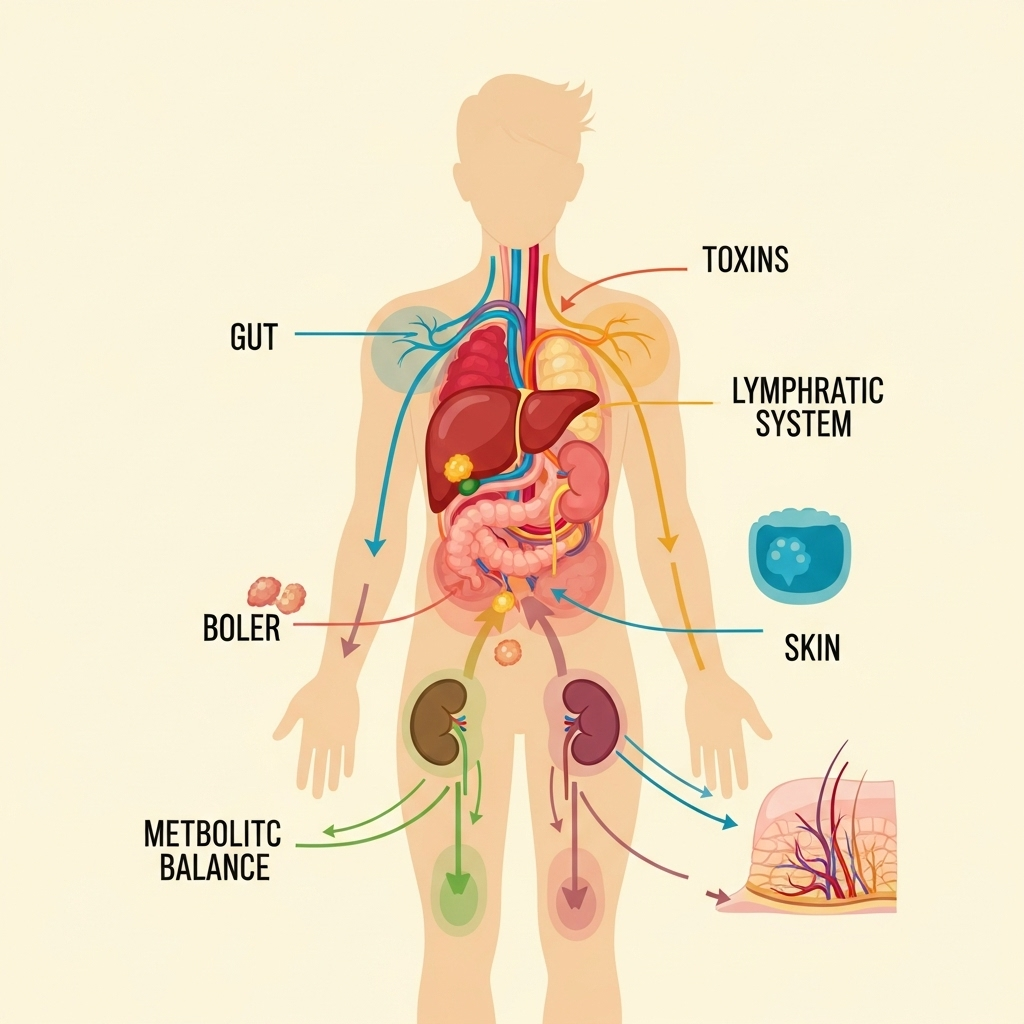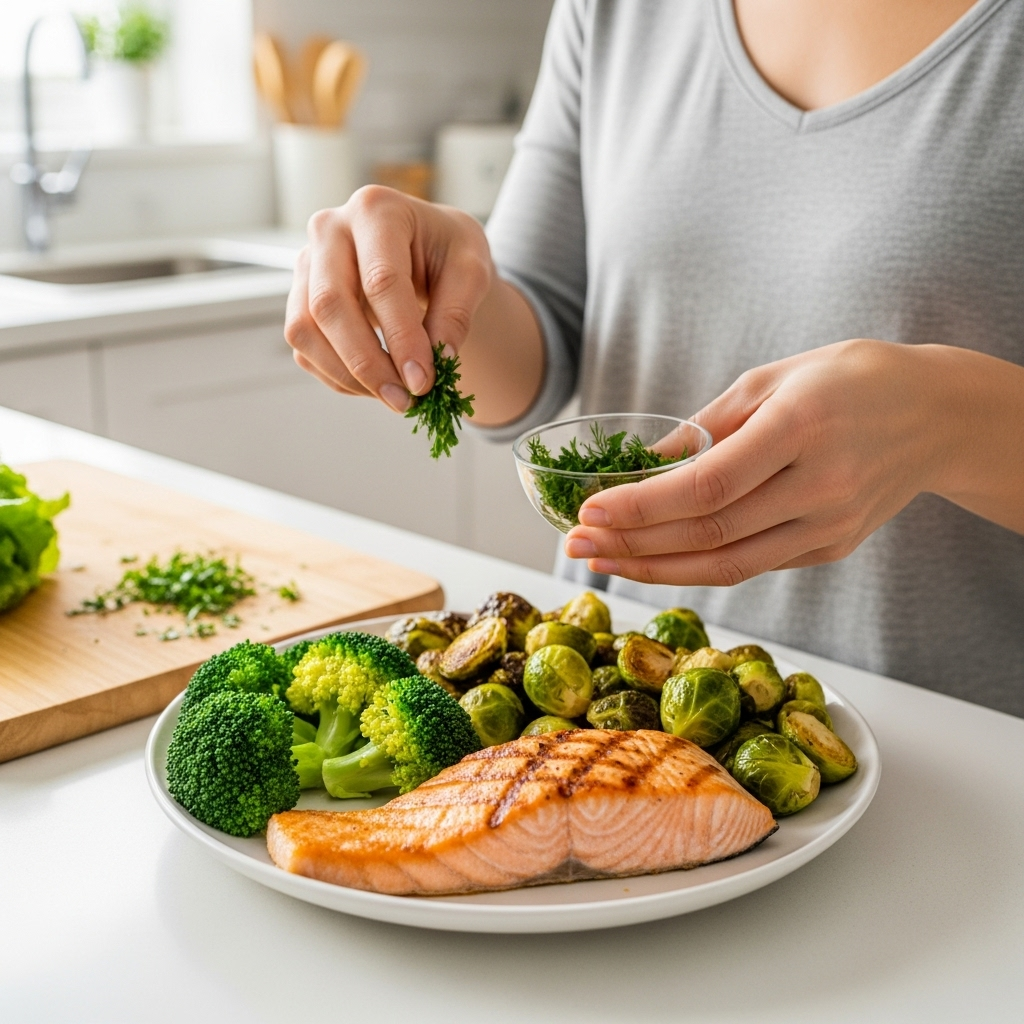In the world of health optimization, we often hear about "detoxing" through extreme juice cleanses or fasting regimens. As someone who works with metabolic health daily, I want to share a more evidence-based approach—especially important if you're managing diabetes or insulin resistance. Your body already has sophisticated detoxification systems in place. The key isn't to force a "cleanse" but to support these natural processes through targeted nutrition and lifestyle choices that simultaneously benefit your glucose control.
Understanding Your Body's Detoxification Systems
Before diving into specific recommendations, it's important to understand how your body naturally eliminates toxins, especially since these processes are intimately connected with metabolic health.
The liver serves as your primary detoxification powerhouse, operating through two main phases:
Phase I (Modification): Cytochrome P450 enzymes transform potentially harmful compounds through oxidation, reduction, and hydrolysis reactions. This process makes toxins more reactive—sometimes temporarily increasing their toxicity—before they can be further processed.
Phase II (Conjugation): The modified compounds from Phase I are made water-soluble through the addition of various molecules (glutathione, amino acids, methyl groups). This critical step allows toxins to be safely eliminated from the body through bile, urine, or stool. Glutathione, often called the body's master antioxidant, plays a particularly vital role here.
For those with diabetes or insulin resistance, these detoxification processes are especially important. Research has shown that impaired detoxification capacity may contribute to the development and progression of metabolic disorders. High blood glucose can deplete glutathione and increase oxidative stress, potentially compromising detox efficiency.
Beyond the liver, other systems also participate in detoxification:
- Gut: Eliminates toxins through stool and prevents reabsorption of fat-soluble toxins
- Kidneys: Filter blood and eliminate water-soluble toxins
- Lymphatic system: Transports waste from tissues to the bloodstream for elimination
- Skin: Eliminates certain toxins through sweat
When these systems work optimally, they help maintain metabolic balance. When they're overburdened—which can happen with poor diet, chronic stress, or environmental exposures—they may contribute to inflammation and insulin resistance.

Nutrition: The Foundation of Effective Detoxification
Rather than restrictive detox regimens that can wreak havoc on blood glucose levels, focus on including these nutrient-dense foods that support natural detoxification while promoting stable glucose:
1. Quality Protein
Adequate protein intake provides the amino acids necessary for Phase II detoxification enzymes and for glutathione production. For those with diabetes or metabolic syndrome, protein also helps stabilize blood glucose levels.
Best sources: Grass-fed meats, wild-caught fish, pastured eggs, and plant-based options like legumes and nuts. Aim for 1.6-2.0g of protein per kg of ideal body weight daily, spread throughout your meals.
2. Cruciferous Vegetables: Nature's Detox Promoters
Broccoli, cauliflower, Brussels sprouts, and kale contain glucosinolates that convert to isothiocyanates like sulforaphane—powerful compounds that upregulate both Phase I and Phase II detoxification enzymes.
Pro tip: Chop cruciferous vegetables and let them sit for 5-10 minutes before cooking to activate myrosinase, the enzyme that facilitates conversion to beneficial compounds. Light steaming (versus boiling) preserves more of these beneficial compounds.
For diabetics, cruciferous vegetables offer the added benefit of being high in fiber while low in digestible carbohydrates, helping maintain stable blood glucose levels.

3. Antioxidant-Rich Foods
Phase I detoxification produces free radicals, so antioxidants are essential to mitigate potential damage. Colorful berries, dark leafy greens, herbs, and spices (especially turmeric and cinnamon, which have the added benefit of improving insulin sensitivity) support this process.
4. Fiber: Essential for Toxin Elimination
Both soluble and insoluble fiber play crucial roles:
- Soluble fiber binds to toxins in bile and prevents their reabsorption
- Insoluble fiber adds bulk to stool and speeds transit time, reducing toxin exposure in the colon
Aim for 30-50g of total fiber daily from vegetables, berries, nuts, seeds, and legumes. Increase intake gradually to avoid digestive discomfort, and ensure adequate hydration as you increase fiber.
5. Healthy Fats
Quality fats are essential for:
- Absorption of fat-soluble nutrients
- Production of bile, which helps eliminate fat-soluble toxins
- Cell membrane integrity, including liver cells
Focus on omega-3s from fatty fish, monounsaturated fats from olive oil and avocados, and saturated fats from quality sources like grass-fed animals. For those managing diabetes, replacing carbohydrates with healthy fats can improve glycemic control while supporting detoxification processes.
Lifestyle Practices That Enhance Detoxification
Nutrition alone isn't enough. These lifestyle practices significantly impact your body's detoxification efficiency:

1. Optimize Sleep
During sleep, your brain's glymphatic system—a waste clearance mechanism—becomes most active. Poor sleep is associated with reduced detoxification efficiency and worsened insulin resistance. Aim for 7-9 hours of quality sleep, maintaining consistent sleep-wake times.
2. Strategic Hydration
Water is essential for kidney filtration and toxin elimination through urine. For most people, 2-3 liters daily is appropriate. Consider adding minerals to your water (a pinch of high-quality salt) to improve cellular hydration.
3. Stress Management
Chronic stress depletes glutathione and can impair liver function. Implement regular stress management practices:
- Meditation or deep breathing exercises
- Time in nature
- Boundary setting with technology
- Social connection
4. Thoughtful Movement
Exercise improves circulation, enhances lymphatic flow, and promotes sweating, all of which support detoxification. For metabolic health, incorporate both:
- Zone 2 cardio (where you can still maintain a conversation)
- Resistance training to build muscle, which improves glucose disposal
5. Strategic Heat Exposure
Sauna sessions or hot baths promote sweating and heat shock proteins, which support cellular resilience and detoxification. Start with 5-10 minutes and gradually increase duration as tolerated. Monitor glucose levels if you're insulin-dependent, as heat can temporarily increase insulin sensitivity.
Reducing Your Toxic Burden
While we can't eliminate all exposures, we can significantly reduce our toxic load with these practical steps:
-
Choose organic produce when possible, especially for the Environmental Working Group's "Dirty Dozen" (foods with highest pesticide residues).
-
Filter your drinking water to remove common contaminants like chlorine, heavy metals, and pharmaceutical residues.
-
Minimize plastic use, especially for food storage and heating. Opt for glass, stainless steel, or ceramic alternatives.
-
Evaluate household and personal care products for potential endocrine disruptors, which can worsen insulin resistance. Resources like EWG's Skin Deep database can guide safer choices.
-
Consider intermittent fasting (if appropriate for your health status and with medical supervision). Fasting activates autophagy—cellular "self-eating" that removes damaged components—and can improve insulin sensitivity.
Conclusion: A Sustainable Approach to Detoxification
Supporting your body's natural detoxification systems isn't about extreme measures or quick fixes. It's about consistent habits that simultaneously enhance metabolic health and detoxification capacity. For those managing diabetes or insulin resistance, these strategies offer a dual benefit: improved glucose control and enhanced toxin elimination.
Remember that detoxification is highly individualized. Factors like genetic variations (such as MTHFR polymorphisms), pre-existing conditions, medication use, and environmental exposures all influence your specific needs. Working with knowledgeable healthcare providers to personalize your approach is always worthwhile.
By focusing on nutrient-dense foods, quality sleep, appropriate movement, stress management, and reducing unnecessary exposures, you'll support your body's innate capacity to detoxify—without the blood sugar roller coaster that comes with extreme "detox" regimens.
The beauty of this approach? These same strategies that optimize detoxification also create the foundation for metabolic flexibility and long-term health.
References:
-
Hodges RE, Minich DM. Modulation of Metabolic Detoxification Pathways Using Foods and Food-Derived Components: A Scientific Review with Clinical Application. J Nutr Metab. 2015;2015:760689. doi:10.1155/2015/760689
-
Liska DJ, Lyon M, Jones DS. Detoxification and biotransformational imbalances. Explore (NY). 2006;2(2):122-140. doi:10.1016/j.explore.2005.12.009






